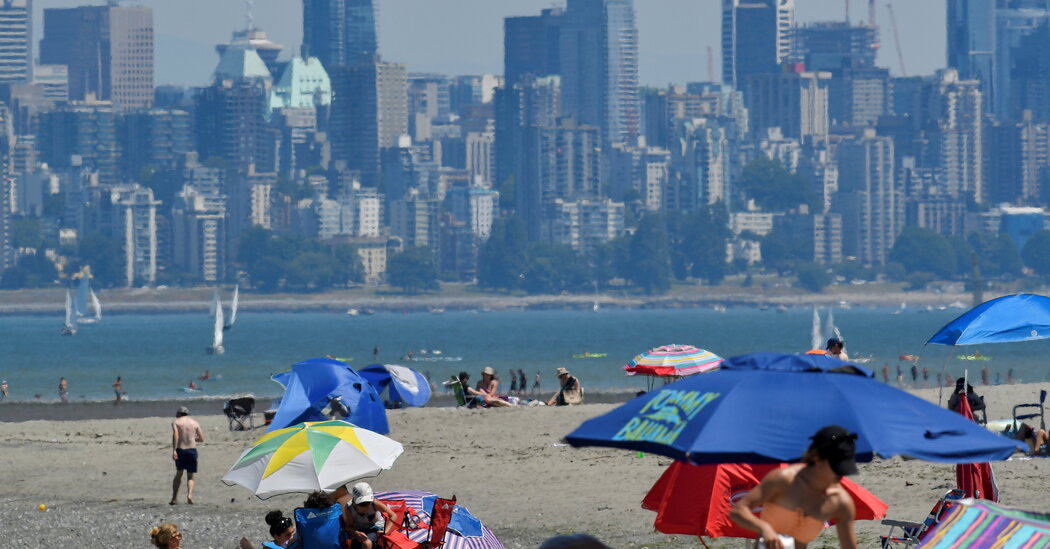
TORONTO — Canada broke a national heat record on Sunday when the temperature in a small town in British Columbia reached almost 116 degrees Fahrenheit, breaking an 84-year-old record by nearly 3 degrees, with dangerously hot weather expected to continue for several more days.
The heat wave across western Canada has much of a country known for its sweater weather, sweating. The same high-pressure system baking the region has also produced record-breaking heat in the northwestern United States, including 112 degrees on Sunday in Portland, Ore.
The scorching temperatures will add another public health burden as the authorities contend with both easing coronavirus restrictions as more Canadians are vaccinated and trying to keep residents cool.
Canada’s old national heat record was 45 degrees Celsius, or 113 Fahrenheit, but on Sunday, Lytton, a town of fewer than 300 about three hours east of Vancouver, reached 46.6 Celsius, or 115.9 Fahrenheit, according to Environment Canada, a government agency.
Other towns in southern British Columbia, including Victoria, Kamloops and Kelowna, are breaking local records under the high-pressure heat dome, and temperatures well over 100 degrees are forecast through Wednesday.
Previously, Midale and Yellow Grass, both in rural Saskatchewan, held the record in Canada for the highest temperature on July 5, 1937, at 113 degrees.
Western Canada’s oppressive “desert heat” contrasts the sultry “jungle heat” seen in eastern parts of the country, akin to temperatures and humidity felt in Florida or the Gulf of Mexico, said David Phillips, a senior climatologist at Environment Canada.
While there have always been heat waves, Mr. Phillips said, the early timing of this one, its intensity and its duration, could all be attributable to rising global temperatures. Tying any one weather event to climate change requires extensive attribution analysis, but heat waves around the world are growing more frequent, longer-lasting and more dangerous.
“It’s our grandparents’ heat waves, but it’s different now because of the human component,” he said, referencing climate change, and the well-documented effects of human behavior, such as carbon emissions, on the planet.
Mr. Phillips pointed to the public health dangers of having heat extend overnight. “We know that nighttime temperatures, that’s where people die from heat waves.”
Several school districts in British Columbia were closed on Monday, given that many buildings are not fitted with air conditioning. Temperatures rarely go above 86 degrees Fahrenheit in Vancouver, Mr. Phillips said.
On social media, people were experimenting with frying eggs in a pan outside, melting crayons placed in a box on a car dashboard in Halifax, or avoiding the sun altogether.
According to the 2018 National Climate Assessment, a scientific report by 13 U.S. federal agencies, heat waves have climbed from two per year in the 1960s to six per year by the 2010. The season for heat waves has also grown 45 days longer than it was in the 1960s, the report notes.
It is all part of an overall warming trend: The seven warmest years in the history of accurate worldwide record-keeping have been the last seven years, and 19 of the 20 warmest years have occurred since 2000. An analysis from the Copernicus Climate Change Service, a group of European climate researchers, found that the hottest year on record was 2020, tied with 2016.
Henry Fountain contributed reporting.
Average Rating